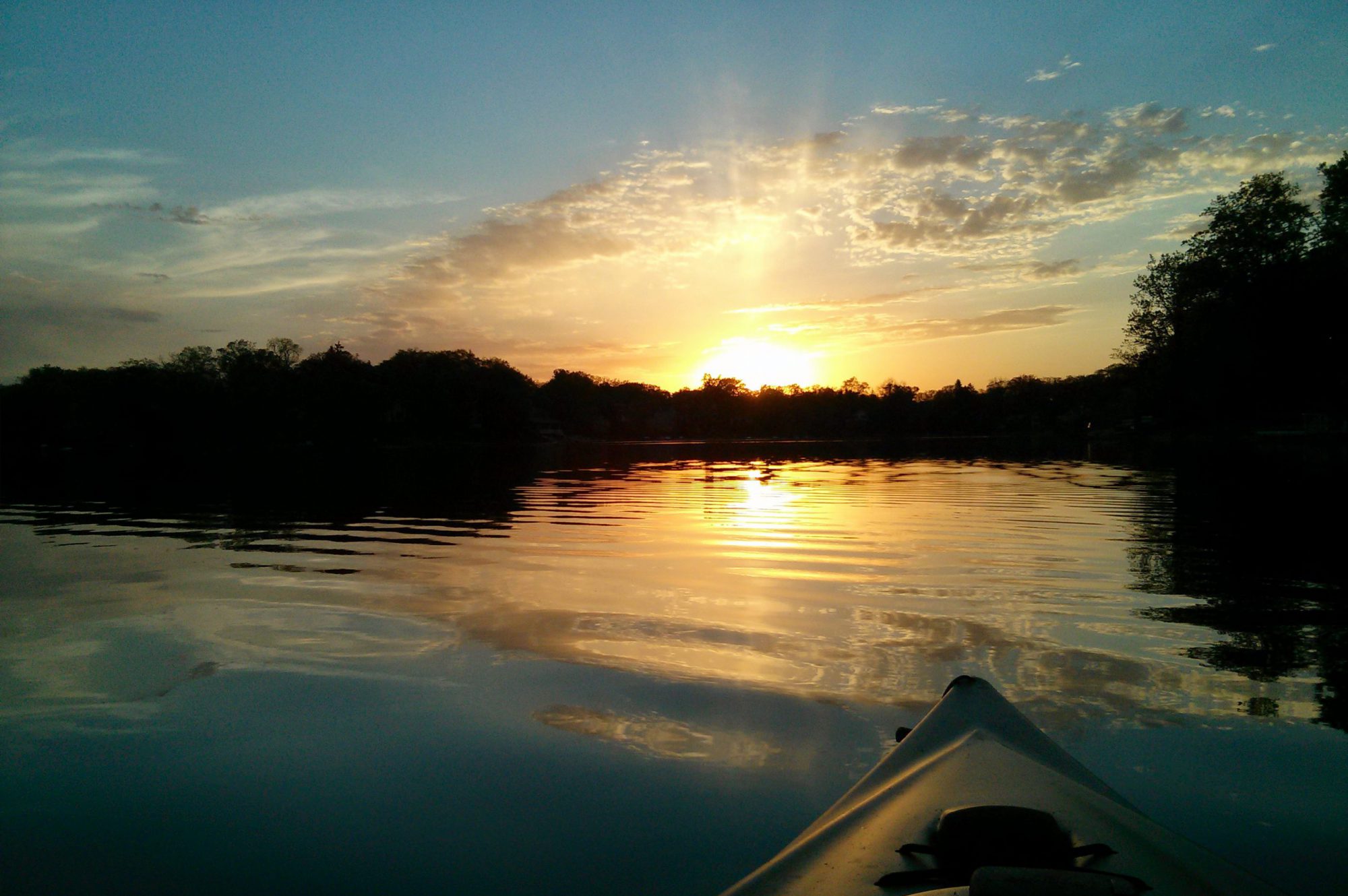Acknowledgements
The Sylvan Lake Improvement Association wishes to thank the following people for their special contributions to the production of this historical project; Bill Bartz, Terri Borst, Jean Hamilton, Dave Hamm, Donn Hamm, Sally Harper, Rich Mirock, Jeanne Peterson and Victor Wallrab.
We also acknowledge with gratitude the aid of the many individuals who volunteered their photos and knowledge towards the preparation of this book.
No acknowledgment for this historical review of Sylvan lake can be complete without the recognition of the long term contributions and commitment of this community of families.
Preface
Why do we, an unincorporated small private lake community have, or even want, a printed history? The reason is that we believe the Sylvan Lake community, its residents and its history are truly special. We want to reflect on what made this area special and to keep the spirit alive for the years to come. We are proud of where we have been and where we are going. Volunteer efforts of many residents have shaped the community and continue to keep it alive and keep it so special. So this history is a tribute for all who helped create Sylvan Lake’s past, present and future. It is impossible to mention everyone’s name and accomplishments, so we apologize for omissions. This document was compiled in 1991 from a prior history written by Vic Wallrab published in 1970, the minutes of the Sylvan Lake Improvement Association and Garden Club, and memories of many residents. A special thanks goes to Jean Hamilton who started this project and the officers of the Improvement Association and Garden Club. To quote Sally Harper, “The cares of population encroachment, pollution and traffic are easily forgotten as one turns off Midlothian and proceeds over the dam into this oasis of beauty and tranquility.”
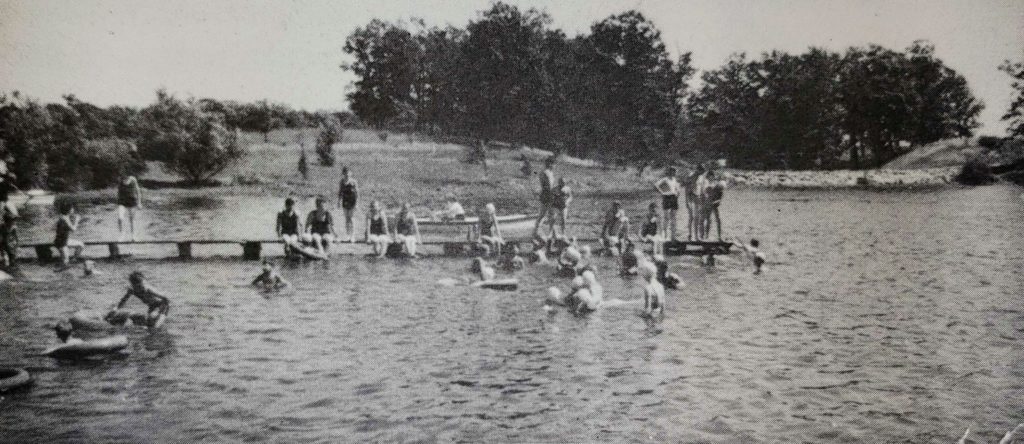
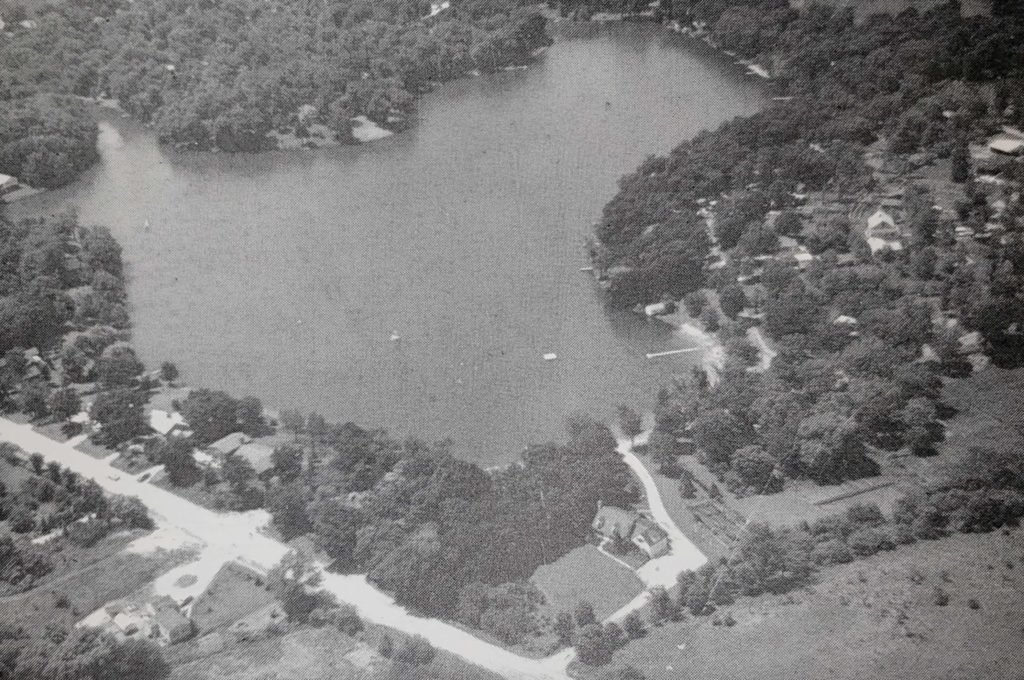
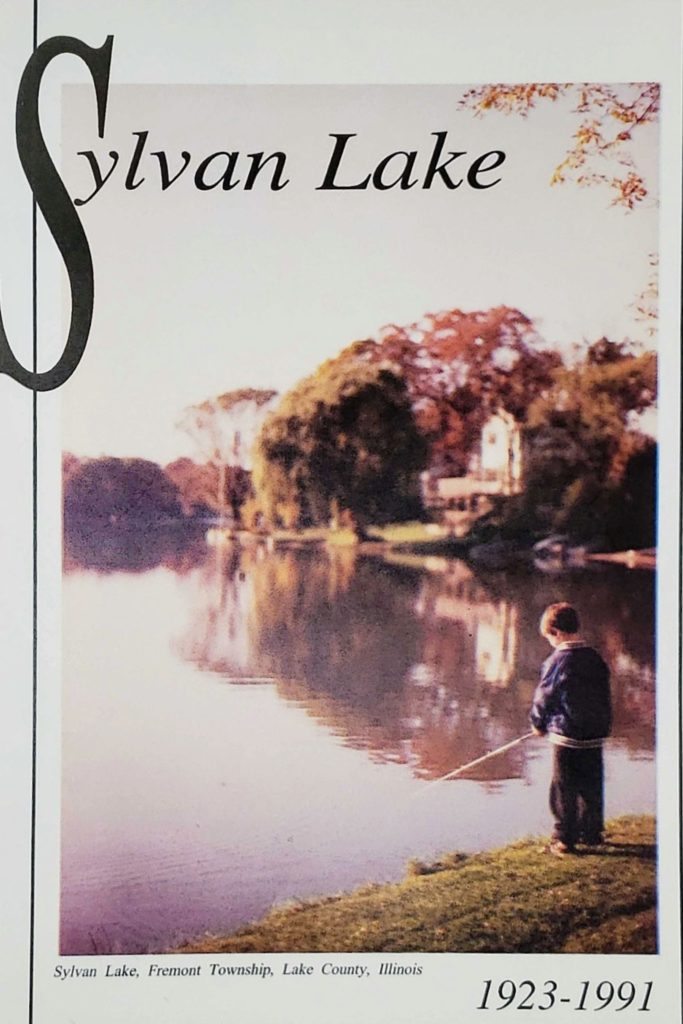
Sylvan Lake, a small private lake and subdivision of about 180 homes, was the first man-made lake in northern Illinois. The lake was created and the surrounding area developed by Mr. August Schwerman in 1923 and 1924. Originally it was a slough containing springs and a flowing stream. Mr. Schwerman dammed the stream and the lake formed. Others interested in land development observed the results and quickly followed suit. Countryside and Forest Lake were among them.
The story of Sylvan Lake could hardly be told without telling some of the historical background of the August Schwerman family. August’s father Henry was born in Hanover, Germany, February 25, 1833. He left his farm in 1854 to find his fortune in America. He bought forty acres of wild land in Fremont Township and worked so industriously that by 1891 he owned two-hundred and forty-five acres.
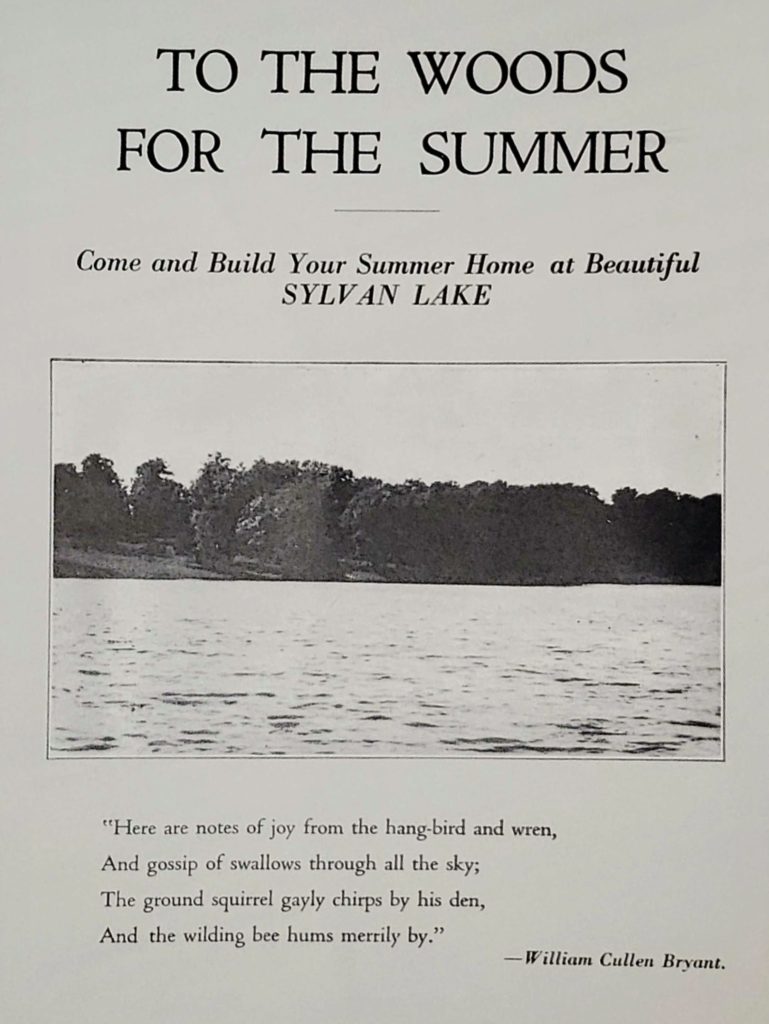
August, the man who brought Sylvan Lake into the world, was born at Gilmer. He studied telegraphy in Mundelein as a young man and became the telegraph operator and freight agent for the E. J. & E. He was appointed postmaster at Gilmer where he operated the general merchandise store and lumber yard. He served as treasurer of the Countryside Fire Protection Association, president of the Sylvan Lake Improvement Association and a member of the Board of Directors of the Lake County National Bank in Libertyville. He left Gilmer after forty-five years in the store and moved to a large lovely home he built on the slope overlooking the dam at 221 Highland where he lived until his death in 1949.
In the early 1900’s this area was essentially the same as it had been before the white man came. The area was surrounded by a hilly, wooded area at a much higher elevation. The swales were boggy, full of rank growing swamp vegetation plush pretty wild flowers including buttercups, common blue violets, dog-toothed violets and wild geraniums. It was a wild area, undoubtedly beautiful, though there probably were few who thought so at the time. In the early 1900’s swamps and sloughs were considered useless, good-for-nothing wastelands. However, August had a vision that the swamp would make a good lake with houses built on the rolling wooded hills.
The first remembered bridge over this stream was built by Mr. Ed Umbdenstock. He cut trees, piled the logs over the stream and then laid planks across the top so he could drive over it. This worked quite well, except that after heavy rains the stream overflowed and washed out the bridge which then had to be rebuilt.
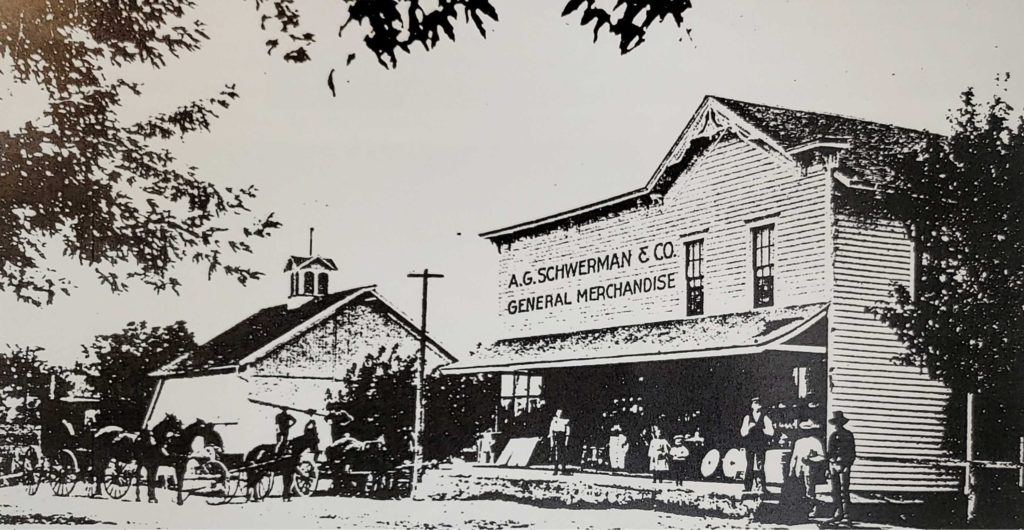
In the 1920’s there was a great demand for summer homes in this area. Mr. Schwerman’s idea for a new lake began to materialize. His plan was to create his own lake out of the big old slough by damming it at one end, leveling and deepening in spots, and cutting and removing some timber. He would subdivide into lots, build roads, provide well water and install electric power. The lots were only to be offered for sale to Lutherans as a private summer resort.
A large Lutheran Church picnic was held on what is now the west side of Sylvan Lake. A baseball game was played between the Concordia Colleges of Milwaukee and River Forest. The church ladies served lunch and Mr. Schwerman distributed a large white paper advertising his plans for this private resort. According to Mrs. Umbdenstock, “This was the first news most people had of the project.”
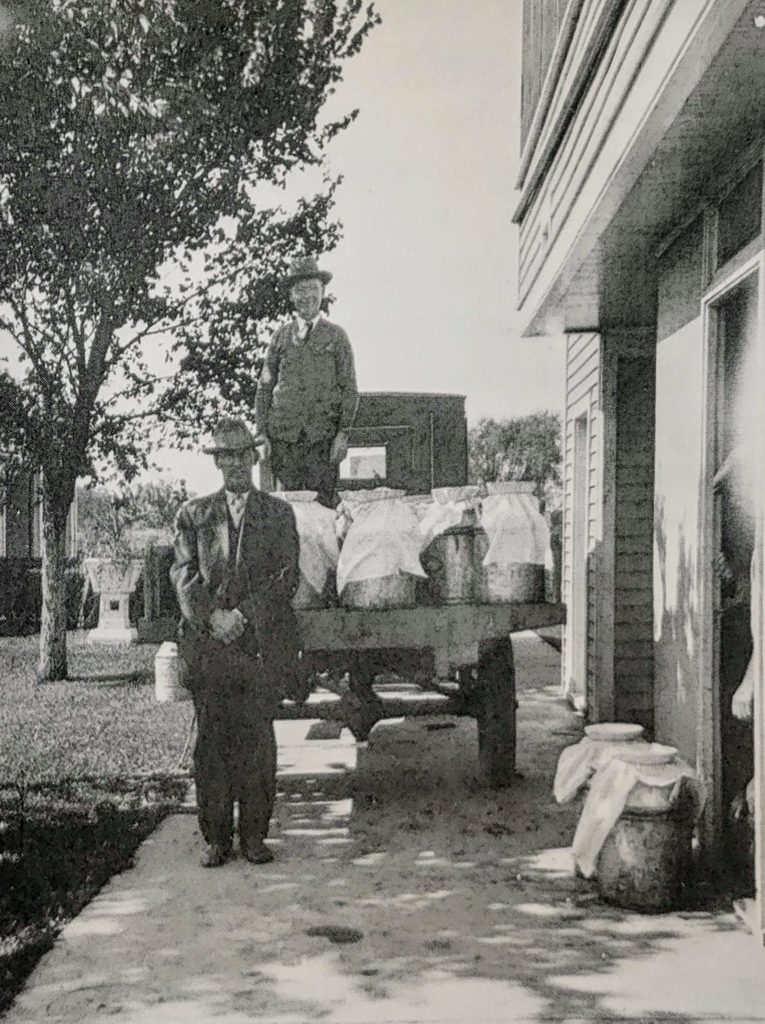
August started construction of the lake. A dam was built of large rocks and stones cemented together. When it was partially completed, heavy rains fell and washed it away, making it necessary to start over. The water began to rise and in a fairly short time a pond started to form, which continued to grow until it became a beautiful lake. August named it Sylvan Lake which literally means surrounded by trees.
By the summer of 1924 the lake had risen to a satisfactory level. August drove up to the Spring Grove Fish Hatchery and hauled fish back in milk cans to stock the lake. The beach was developed and a pier built. Mr. Studer surveyed and laid out the lots. Community wells were put in and pipes were laid to each lot. Roads, beginning with Sylvan Drive, were built by Ed, George and Clem Umdenstock, Ed Jones and Harmie Bauman.
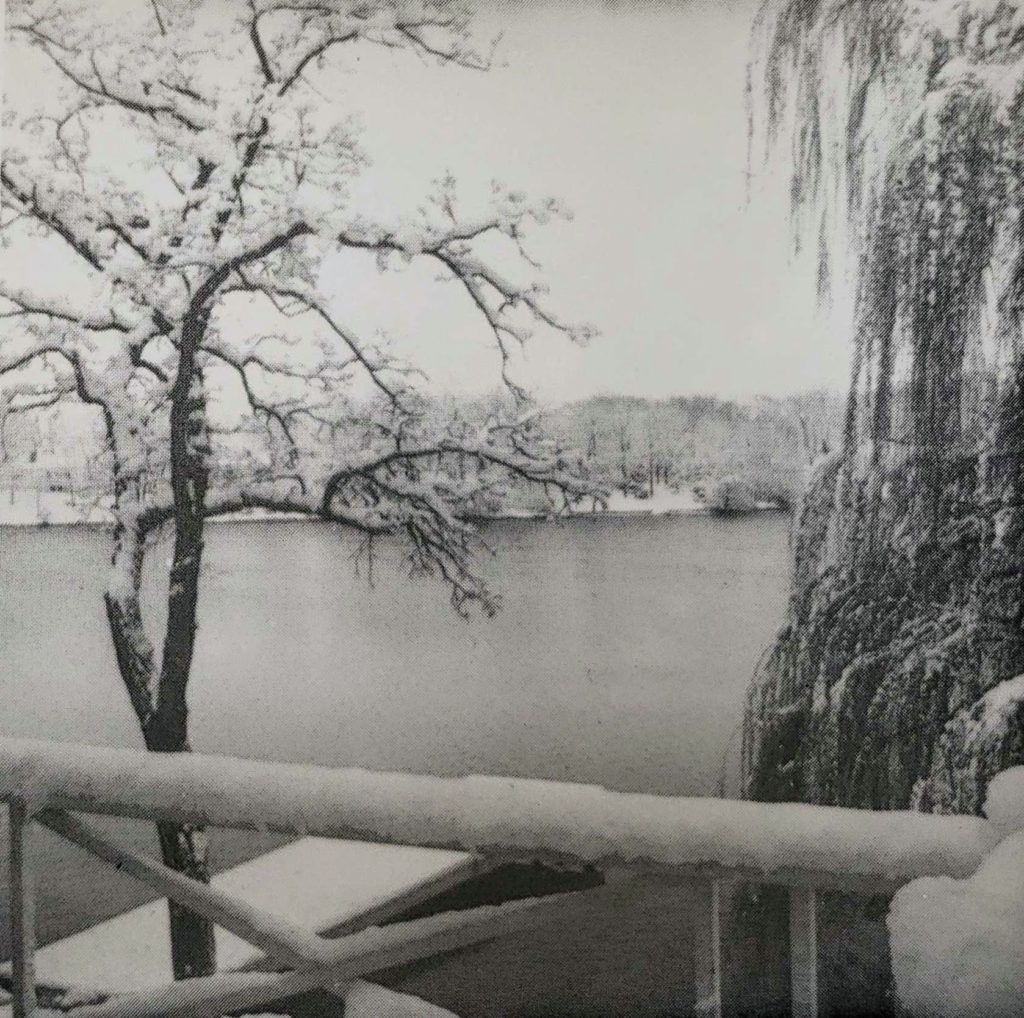
The first three lots were sold on October 8, 1924 to Charles F. Thoms, a retired businessman of Oak Park for $1,500 each. The Libertyville weekly paper, the Register, reported the “Mr. Thoms’ intention was to build a seven room cottage with basement and a large porch this winter and the balance next spring.” The first home, however, was built by Bob Luebbe for the Helberg’s. More cottages were built including one for Albert Gilster and another for William Busse. All of the early homes were summer cottages.
Work was begun on the side bays. While deepening the west swale, trouble developed in the form of a giant elm stump. It proved very resistant. Though they dug, chopped around it and tried to pull it out with their horse teams, they were unable to budge it. Hot, sticky with sweat, tired and discouraged they stood there. Finally August said, “I’d sure like to get that thing out of there.” Ed said slowly, “Maybe, —a little dynamite would do it. Would you use it if I got it?” The dynamite was purchased, carefully placed in strategic spots, the fuses were lit and everyone ran. The stump blew out but came down right through the roof of one of the new summer cottages. It left a huge hole and, of course, the stump too. Fortunately no one was in the house but since the owner was expected on the weekend, a carpenter was hired and the house repaired before the owner was aware anything had happened.
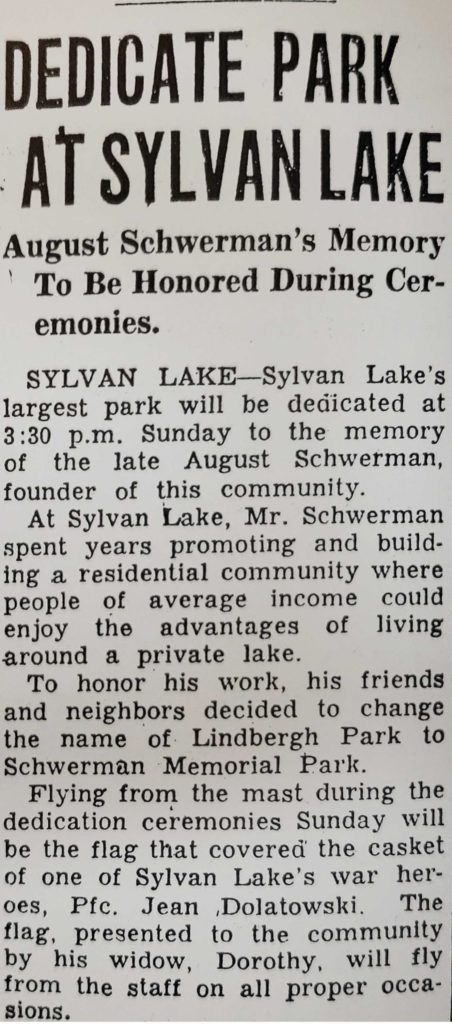
News of the this new private man-made lake and subdivision was getting around. However, Mr. Schwerman was unable to attract enough Lutherans to buy his lots, so he changed his advertising offering them to others. As an incentive to purchase at Sylvan Lake, August offered to plant two evergreen trees on each lot purchased. August’s nephew, Bob, planted these trees when he was a teenager. It is likely that some of the tall, old trees that still stand were planted as part of this promotion.
The lake was beautiful and covered more than 33 acres. The hillsides sloped rather sharply down to the waters edge and were covered with a variety of large trees, such as walnut and hickory. The residents delighted in gathering nuts in the fall.
Although some permanent homes had been built, Sylvan Lake remained a subdivision of summer homes until 1941 when many home owners began to winterize.
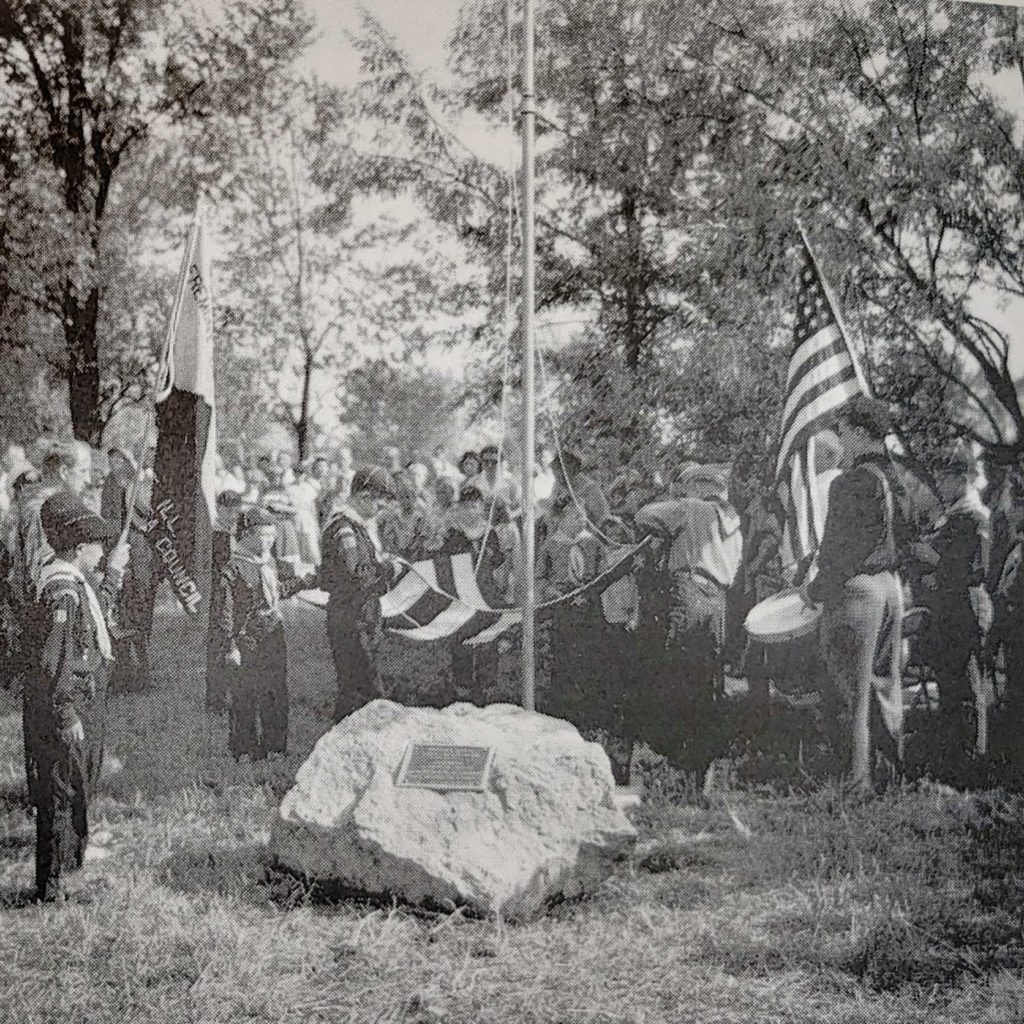
Those who knew August Schwerman will never forget him. He was kind and helpful and always took a friendly interest in the residents of Sylvan Lake. Many remember how he loaded his little pickup truck with sweet corn and drove around giving it away. He would say, “I had too much in the garden.” In 1952, Sylvan Lake residents decided to honor him by renaming their largest park, Lindbergh Park, to the Schwerman Memorial Park. They said at the dedication, “In memory of the many years he devoted to promoting and building a residential community where people of average income could enjoy the advantages of country living.” A boulder with a memorial plaque was placed in the park.
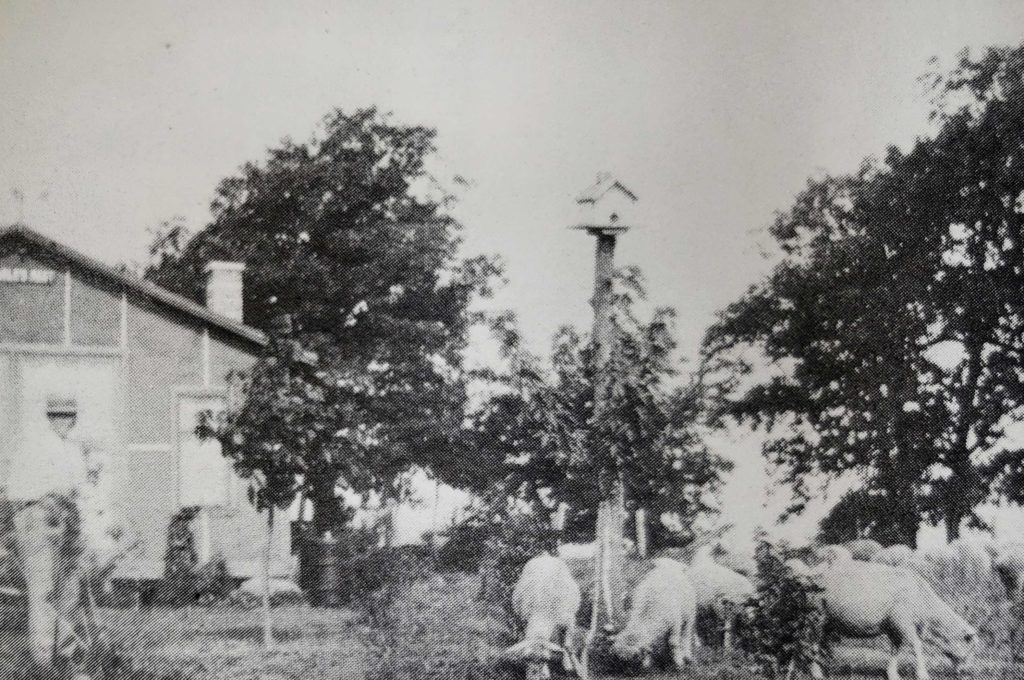
The Sylvan Lake Improvement Association
A need for an organization to maintain the lake and various common properties such as parks and easements resulted in the formation of the Sylvan Lake Improvement Association. This non-profit organization had its first meeting on August 4, 1940. Annual dues were set at $5 and a fee of $5 assessed to provide working funds and enable the creation of a corporation. August Schwerman signed a Quit Claim Deed dated August 25, 1942, which assigned all playgrounds, parks, terraces, streets, drives and dam to the Sylvan Lake Improvement Association. Mr. Schwerman agreed not to add any more property to the subdivision so that it would remain a small select community.
Association by-laws were established upon incorporation. The stated purpose of this association was to organize property owners of Sylvan Lake to maintain the lake, beach, parks, easements and other public properties, and to engage in and conduct activities beneficial to the community.
Nine Board members are elected by the residents of Sylvan Lake. Committees are appointed to address the following: lake management, beach, parks and easements, recreation, safety, greeting and newsletter. Association dues are approved by residents at an annual meeting. The dues fund the projects that benefit the community and volunteers supply labor. The Association effectively provides many services that local taxing bodies normally provide. The difference, however, is the time and effort volunteered by residents who care about this unique community. The Association efforts keep the parks maintained, the playgrounds safe for our children, the beach clean and reserved for resident use, the lake relatively weed free and stocked with game fish, and they coordinate recreational activities such as volleyball leagues and tournaments. The Association also organizes various social events to bring the residents together. This community involvement makes Sylvan Lake a truly wonderful place to live and raise a family.
Garden Club
Sylvan Lake families have always taken pride in beautifying their homes with gardens and landscaping. The first meeting of the Garden Club was held at the home of Mrs. Gilster on August 21, 1941. Gertrude North was the first president. The women of the lake met for the purpose of organizing an auxiliary to the Sylvan Lake Improvement Association. The club’s major purpose would be to beautify the areas around the lake.
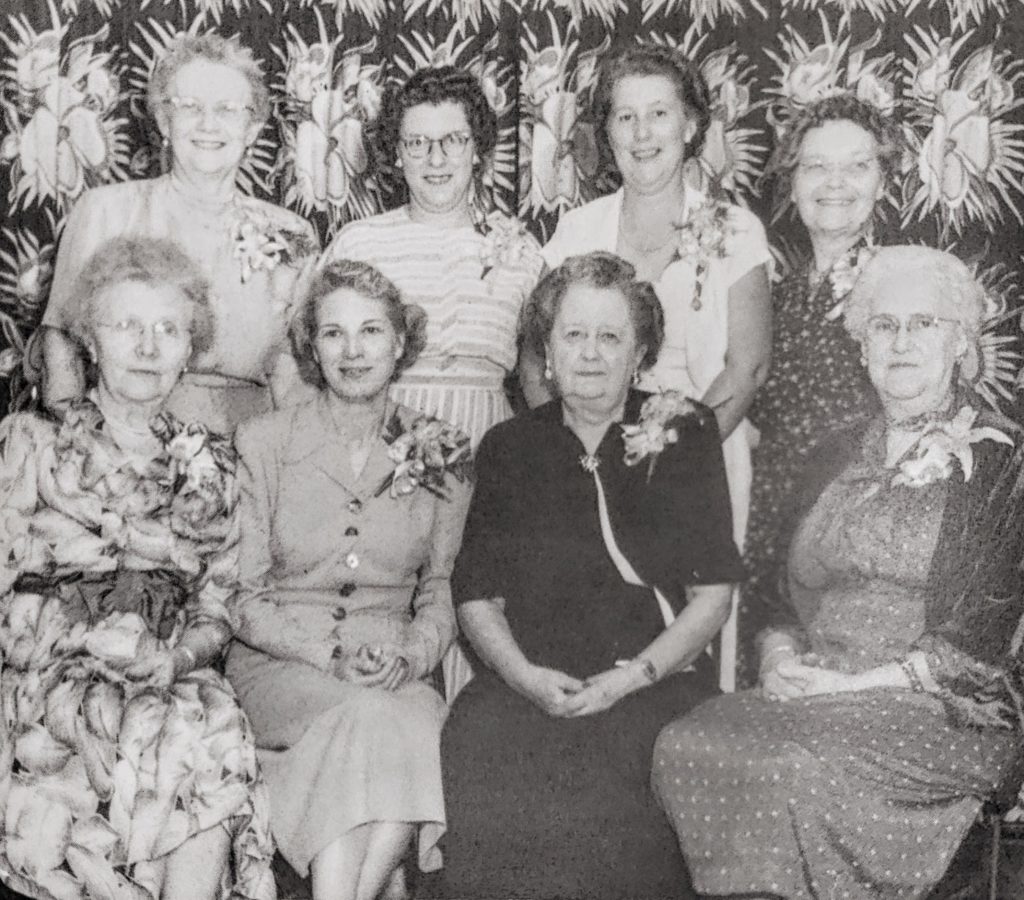
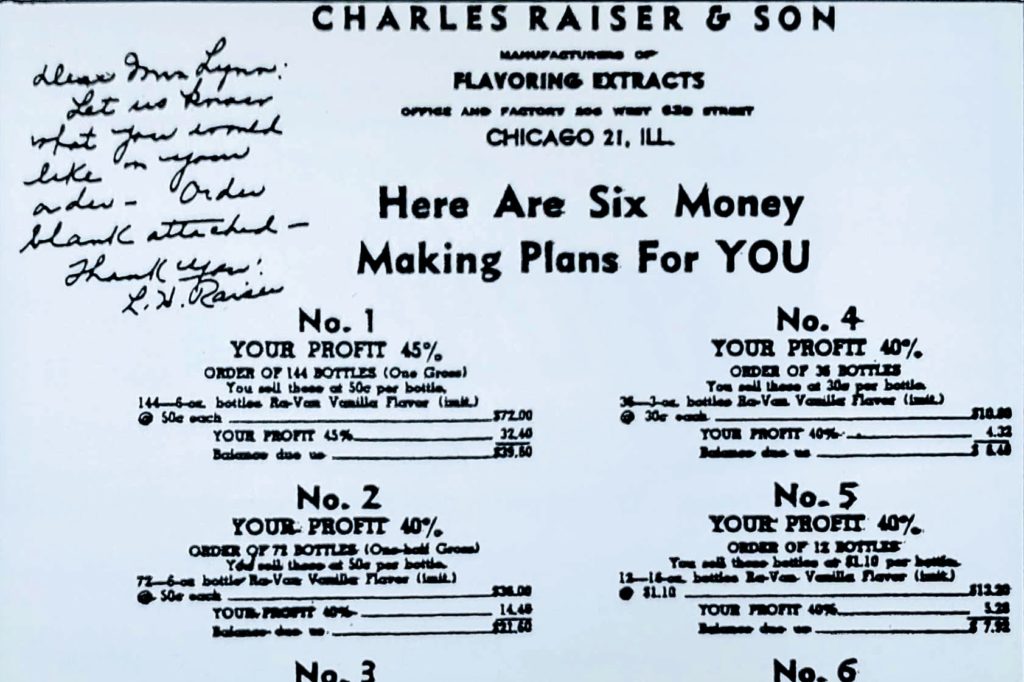
The second meeting was held in July 1942 and the first of many fund raising projects was begun. The Garden Club hoped to earn $34 by selling 144 bottles of vanilla. Although this took two years the goal was eventually attained. Some subsequent early projects reportedly earned up to $1200! In the early years the Garden Club loaned the Association money when funds were short. The loans were usually canceled.
The first few years Garden Club meetings were held only in the summer “because so many left the lake for their respective home on account of school openings.” During the 50’s, however, the monthly meetings evolved. In addition to sponsoring a girl scout troop and summer swimming lessons, memorable programs included: Come as you are breakfasts, Book reviews, Crazy/tacky hat contests, Wine tastings, Recipe nights, Card parties, White elephant parties, Fashion shows, Foreign exchange students and Meat cutting demonstrations.
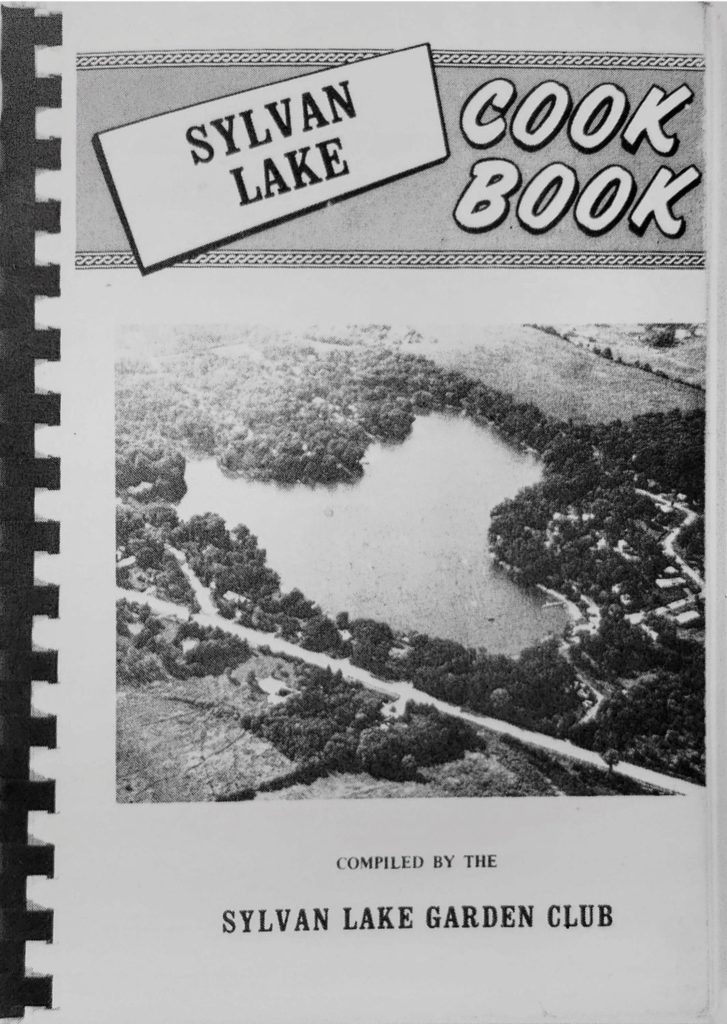
In 1943 the group decided to send cards to members who were hospitalized and flowers when there was a death. The Sunshine Committee was formed in 1957 to carry out this function and continues to do this today with the added task of greeting all new residents with a member of the Association. Since 1965 many residents have appreciated Rita Rak’s Sunshine activities and delicious cookies.
In 1988 the Garden Club assumed responsibility for the Meals at Home Program. This effort was originally started by Betty Scharff and the Sylvan Lake Women’s Bible Study Group in 1983. Almost 100 meals are served annually to ill residents and their families.
Social Events
Many dances, carnivals, card games and house parties have been held through the years for fun and funds, for the community. In the early years these fundraisers were a main source of support for all lake improvements, as well as regular expenses. The Winter Club and Snow Shovelers sponsored parties into the early 1970’s. The Sylvan Lake Improvement Association sponsored annual dances welcoming all Newcomers. In November 1962, the dance orchestra cost only $85. These early dances were well attended and featured refreshments following a Grand March led by Kurt and Louise Koppitz. One of the most memorable dances was orchestrated by Lance Penney commemorating the bicentennial. Period dress, portrait photos and elaborate decorations contributed to the success. Dances were held at the Countryside Fire Station but when the cost of renting the facility rose, other buildings were explored. One of the best turnouts followed the winter lake dredging. A “Let’s Get Back Together” dance was held at the Village Barn in Hawthorn Woods. Western dress and casual atmosphere was the theme. A low treasury balance meant music by records, but at the last minute, Ann Cavanaugh tracked down a new group of musicians who donated their time for the experience and the refreshments.
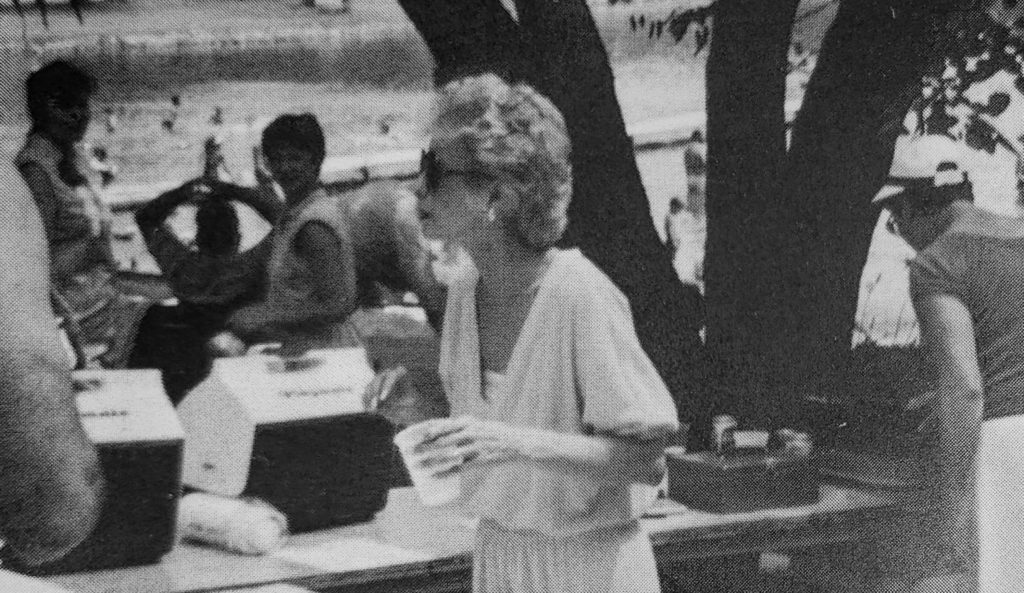
Dance attendance started to decline so the Association and the Garden Club looked for other events to draw residents together socially. Fourth-of-July and Labor Day picnics had long been a feature and they continue to draw big crowds. On Labor Day “1976” activities included a fishing derby, volleyball, lunch at the park, games at the beach, sailboat races, canoe races, row boat races, swimming events baseball at the park, adult games and a raffle. Older teenagers jousted with padded poles while balancing in canoes. Somehow the Washburn boys always seemed to win this event.
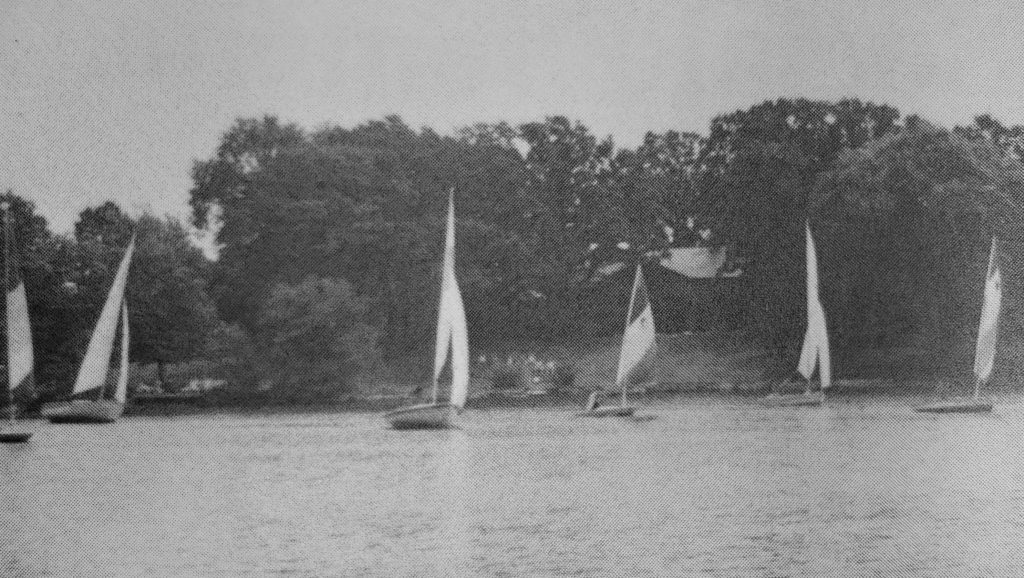
In the fall of 1975, Sally Harper and Marsha Swissler organized the first annual Oktoberfest. Sylvan Lakes’s own meteorologist (who no longer lives here) recommended holding this event late in October as the weather predictions were favorable. What started as drizzle, quickly progressed to rain, sleet, and snow. Oktoberfest continued to be a great social event, but it rose to new heights when orchestrated by Don Kroening and clan. What was generally an evening event, expanded to day long activities including flea markets, hay rides, story tellers, live music, bonfires, and superb brats and beverages served under a tent.
Although the first Oktoberfest held the honors as the coldest outing in known history, the Winter Carnival held in February 1979 saw temperatures dip to zero. Weber cookers filled with red-hot charcoal could barely keep the beer snuggled beneath from freezing. At subsequent winter outings hot mulled cider and wine were served. Residents have been known to play touch football, softball, golf and other games on the ice. Camaraderie was enjoyed.
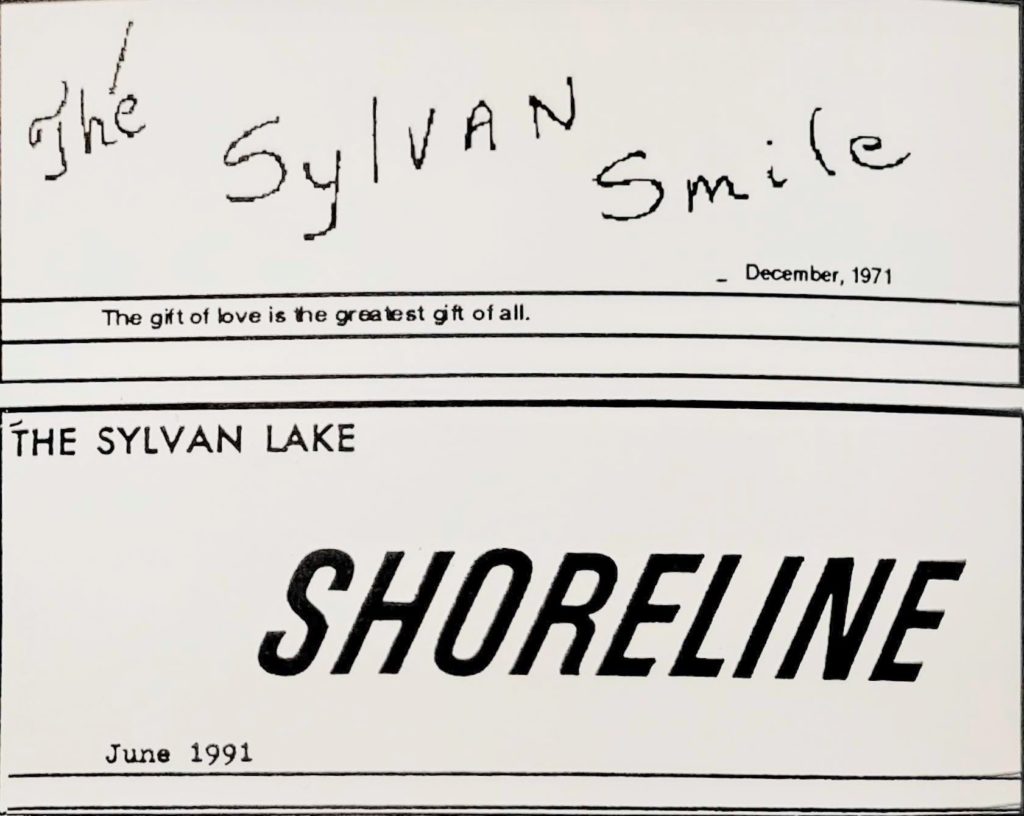
Sylvan Lake News
Since its beginning the Sylvan Lake Improvement Association Board has attempted to keep residents informed of plans, programs and projects. In early 1954 the first newsletter was distributed. In 1971 the newsletter became the “Sylvan Smile” edited by Don Metz. In 1973 it evolved into the “Shoreline” by Ralph Schlenker and Rich Borst then followed by Tom Cavanaugh. Sally Harper published the Shoreline 8 to 10 times a year from the mid-70’s to 1991 and added her touch of notable quotes and humor that were enjoyed by all.
Fern McCallum started contributing to the Libertyville Independent Register “Items” column in the 40’s. This continued through the 60’s and included news about Association and Garden Club activities and items about area residents.
The Garden Club distributes their own newsletter for their activities and also contributes to the Shoreline. Special events, such as recreational activities, social gatherings and clean-up day, are heralded by flyers placed on mail boxes. Bulletin boards at the Beach and Bjorkland Park were erected by the suggestion of Jerry Kroll for posting of notices by groups and individuals.
Community Projects
Over the years there have been many community projects undertaken by the residents of Sylvan Lake. This section describes the more noteworthy activities.
Until the township took over maintenance of the roads in 1971, the Winter Club followed by the Snow Shovelers assumed responsibility for snow removal. The winter residents had to shovel themselves and their neighbors out before going to work. These hard workers were rewarded with a party in appreciation of their efforts.
In 1970 a fish kill was necessary because of an over abundance of rough carp and bull heads which suppressed the population of sport fish. A chemical called rotenone killed the fish and caused them to float to the surface for a short time. It was necessary to scoop up the fish before they sank to the bottom of the lake. Power boats were even allowed to assist in the effort. Big containers were provided to collect the fish to be hauled away. Oh, what an odor! Prizes were given for the biggest carp and food and beverages were supplied to the workers. Following recommendations of the Department of Conservation, the lake was restocked with bass and blue gill.
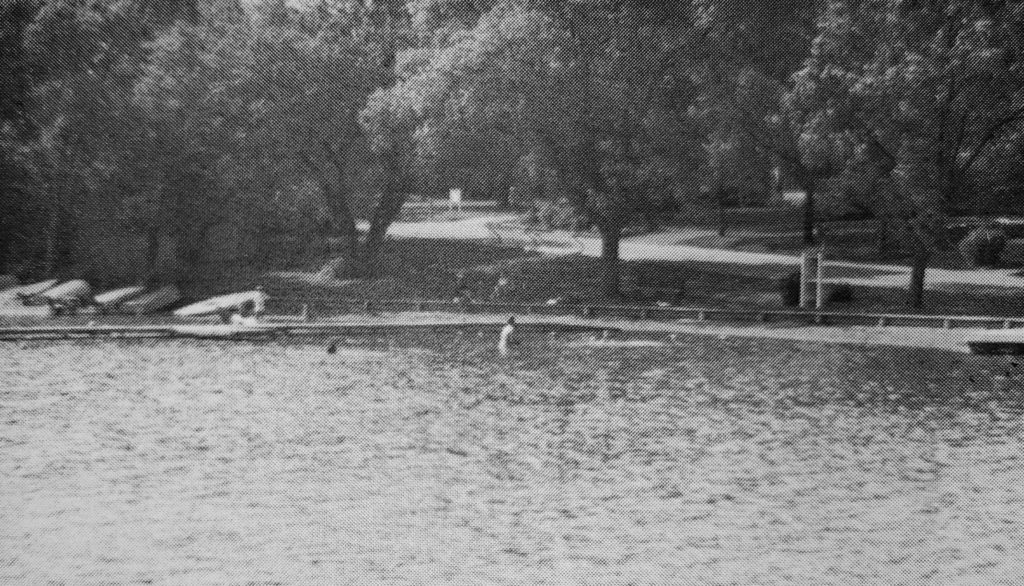
The Sylvan Lake beach area has always been considered a prime candidate for upkeep and renewal. To prevent erosion of the grass area, a concrete curb was proposed early in 1972. Don Bjorkland was in charge of the project and in August 243 feet of curbing was put in by manpower provided by residents under Don’s supervision. Don also suggested tearing down the old boat house and replacing it with a steel structure. In August 1973 a basketball court was poured in Schwerman Park and the base for the new boat house was poured in September. Dan Kaloway was always knee deep in concrete on these projects, as well as being a great help digging holes for tree planting and playground posts. The new boat house was completed in November and the old boat house was dismantled in March by community efforts. Don Bjorkland’s contribution to Sylvan Lake was recognized by renaming a playground, Bjorklund Park, and honoring him by a memorial plaque.
Further work at the beach was under the supervision of Jerry Kroll. The large planter housing the honey locust tree, the extension of the beach, and work on seawalls and the boat launch area were accomplished under Jerry’s leadership. Recently, new “quality” signs demonstrate the workmanship of Ken Bellinder.
During the winter of 1976-77, a severe winter fish kill occurred. A population study indicated a significant reduction in bass which allowed a sharp increase in carp. The lake management committee headed by Roger Halvorsen recommended an aeration system to oxidize and remove organic bottom sediments. Sylvan Lake’s management committee has been used as a model by other lakes in the state. The lake is constantly monitored and action, such as weed and algae treatment and restocking, is taken as needed.
A fine example of a successful community effort was the defeat of a proposed garbage land fill within a mile of the lake. In 1977-78 Waste Management tried three times to gain approval for the dump. The Stones and the letter writing campaign organized by Stan and Rita Rak helped defeat the project. Don Deuster was instrumental in holding a public hearing which led to the EPA’s rejection of the land fill plan.
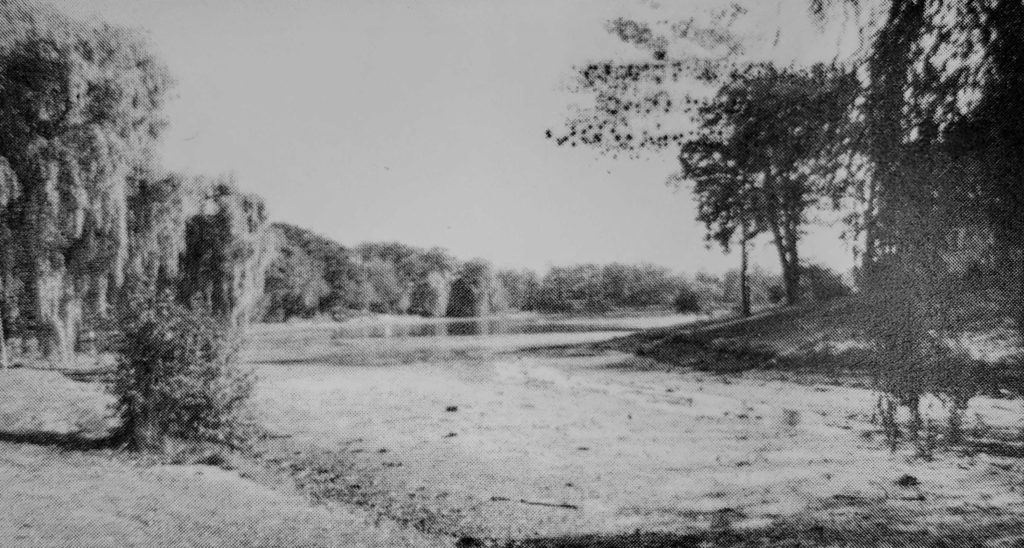
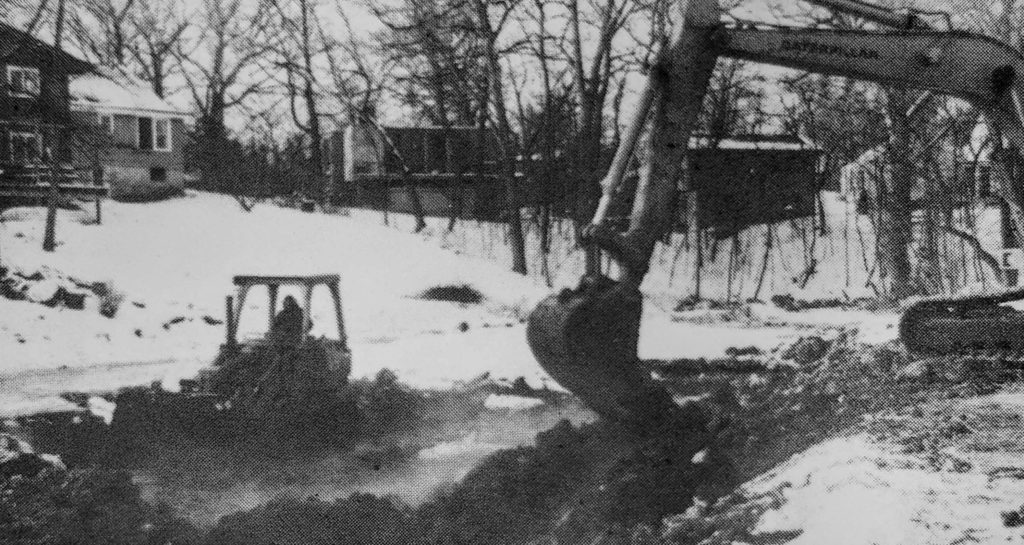
The most controversial project was the dredging of the bays in the winter of 1980. Although dredging was first discussed in 1953, after months of planning, study, argument and special $150 assessment it finally became a reality. The bays had filled with silt from surrounding field run-off and it was feared that the quality of the entire lake would continue to deteriorate with silt encroachment. Siphons were used to lower the lake level. Four 4″ and two 6″ plastic flexible tubes were placed over the dam for draining the lake into Indian Creek. These were slashed several times, requiring a 24 hour resident patrol for 17 days in October. A fire below the dam was kept burning to keep the two person/two hour patrol warm. Al Grandt provided his camper on the dam for shelter while the Grahams provided electricity. After the lake froze, the silt was successfully removed with bulldozers and other equipment. The lake refilled the summer of 1981 with swimming, boating and fishing back to normal. The nature of our watershed predicts a repeat dredging in the future and lessons learned from this experience should prove helpful to our future. One of the benefits gained from lowering the lake was the opportunity to improve or build seawalls.
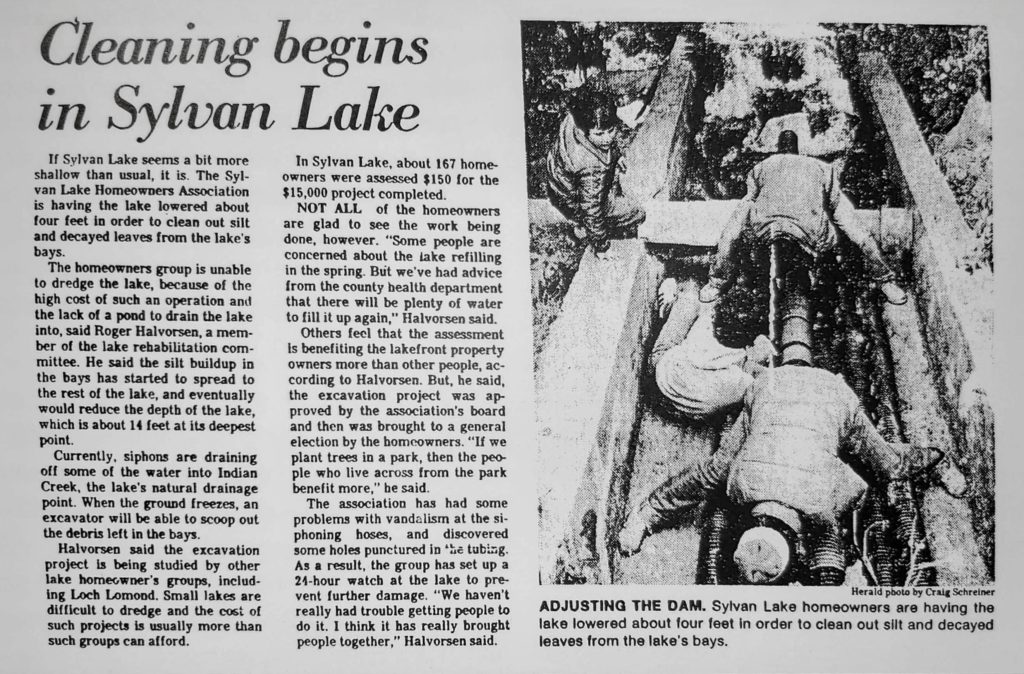
In late May a Saturday morning is set aside for community clean-up. Residents gather to rid the entrances, parks and easements of winter debris. Food and beverages are supplied to workers at noon. Along with cleaning up the area, the weekend is marked for the Carp-A-Rama. From noon on Saturday until Sunday afternoon, residents are encouraged to catch and keep carp and other overabundant pan fish. The big count down is Sunday with cash prizes for biggest fish as well as cash for each fish. A special bounty has been offered for the capture of the elusive Colonel Carp. This event may not make a significant dent in the carp population but it is fun and the youngsters go home with some spending money.
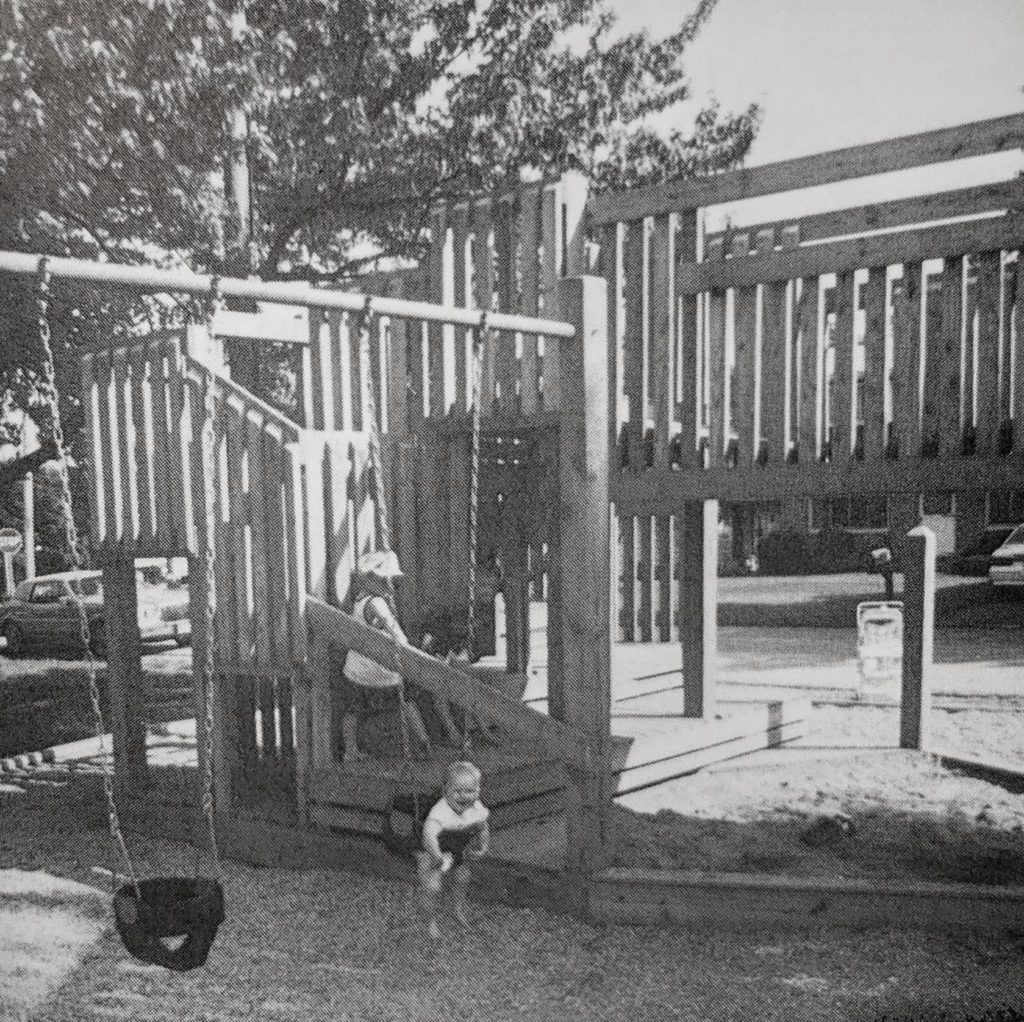
None of the many volunteer projects had a greater scope than the rebuilding of the playgrounds at Point Comfort and Schwerman Parks in 1988 and 1990. Each of these projects required a month of labor by residents, age 8 to 80. What was not as obvious is the months of planning by the Mihels, Hansons, Polivkas and Borsts. The smiles on the children’s faces was enough payment for the many crew chiefs and workers too numerous to mention.
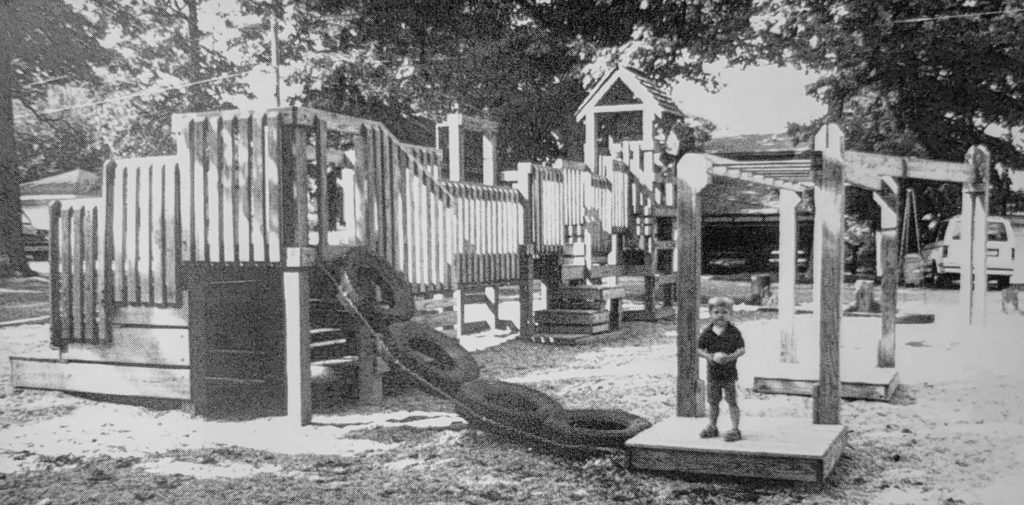
The Boy Scouts of America have left a lasting mark on our community. Over the years John Chesney’s Eagle Scout candidates have improved the dam and built seawalls at several easements. Curbing was installed at the Midlothian entrance and steps built in Juneau Terrace. Easement and terrace signs, bridges and foot paths have been constructed and improved. Over the years they have clearly added to the beauty, protected the ecology and improved the safety for all of us.
